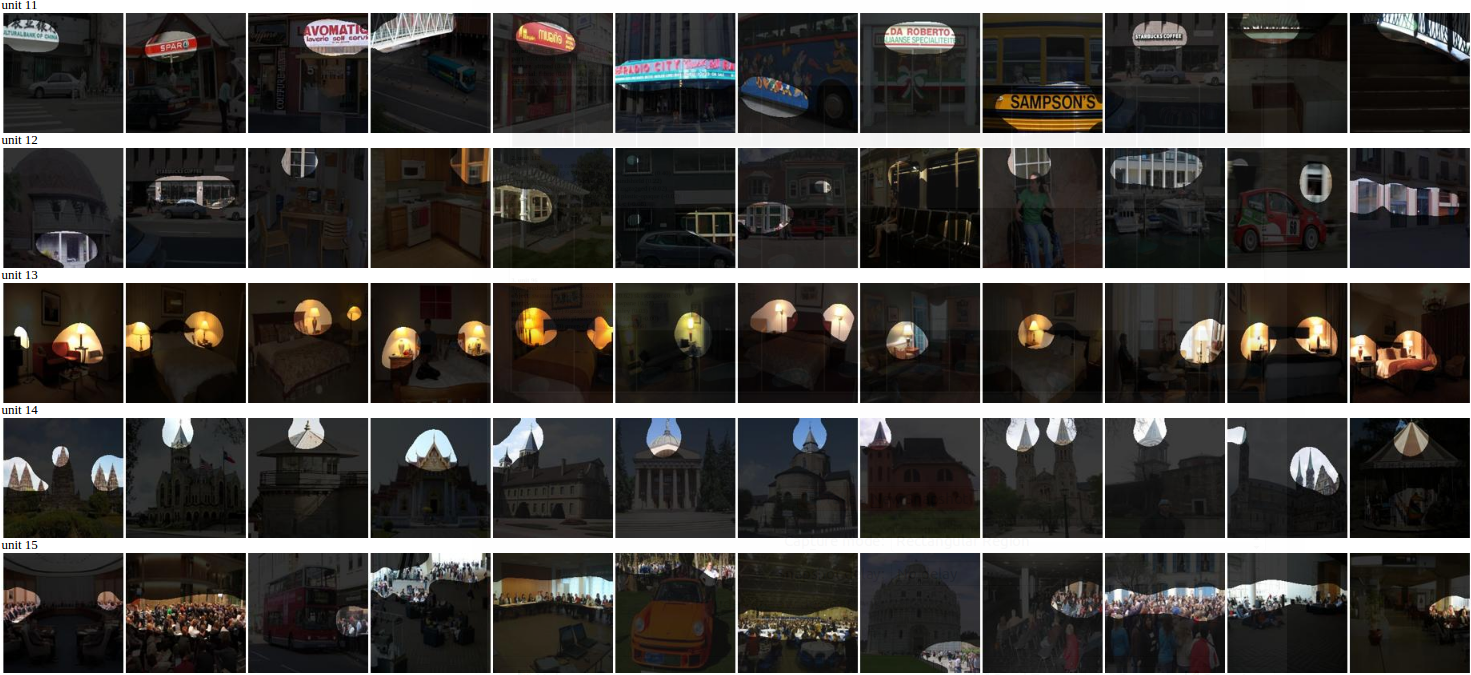CNN Visualizer: Toolkit for Visualizing Units in Deep Convolutional Neural Networks
Introduction
This repository contains the codes and results for visualizing the units (or named as neuron or convolutional filters) inside deep CNN. Some of the codes have been used for the ICLR'15 paper Object Detectors Emerge in Deep Scene CNNs. You can use this toolkit with the naive caffe, with matcaffe and pycaffe compiled, or pyTorch. This toolkit includes the following functions:
(NEW!) PyTorch script:
pytorch_extract_feature.py: code to extract the CNN features at the selected layers of a CNN model for any given images.pytorch_generate_unitsegments.py: code to generate the visualization of all the units at the selected layer.
Matlab script:
extract_features.m: code to extract the CNN activation at the selected layers for any given images.generate_unitsegments.m: code to generate the visualization for all the units at the selected layer.unit_annotation: the results of unit annotation for Places-AlexNet and ImageNet-AlexNet.unit_segmentation: code to generate image segmentation for a single image using the synthetic receptive field.minimal_image: possion removal of the image content, to generate the minimal images.
PyTorch Environment
pip install -r requirement.txt
Download
- Clone the code from github
git clone https://github.com/metalbubble/cnnvisualizer.git
cd unitvisseg
- Download the image samples and the pretrained models
sh download_images.sh
sh download_pretrain.sh
Run
Properly set up the caffe path in the shell scripts, matlab scripts, and python scripts. We show the procedure to probe the unit semantics for alexnet trained on Places205 as follows:
- Generate the visualization for all the units in one layer of a given CNN. It gets the top ranked images for each unit then segment them using the approximate receptive field of the units. The results are output to result_segments. After it finishes, you could click
result_segments/places205_alexnet.htmlto see the visualization of unit segmentation.
matlab -nodisplay -r generate_unitsegments
Samples of unit segmentation are shown below. Each row indicates the images segmented by the receptive field of one unit.
- Generate the minimal image.
cd minimal_image
matlab -nodisplay -r demo_bases
Sample of the bases and images generated from combining the bases:
- Generate image segmentation using the synthetic receptive field of one unit.
cd unit_segmentation
matlab -nodisplay -r demo_unitsegments
It generates the image segmentation like this:
- Extract the CNN features from any layers of any CNNs for any images. It will output the CNN features for the selected layers.
matlab -nodisplay -r extract_features
References
If you find the toolkit useful, please cite our ICLR'15 paper:
Bolei Zhou, Aditya Khosla, Agata Lapedriza, Aude Oliva, and Antonio Torralba
Object Detectors Emerge in Deep Scene CNNs.
International Conference on Learning Representations (ICLR), 2015.


